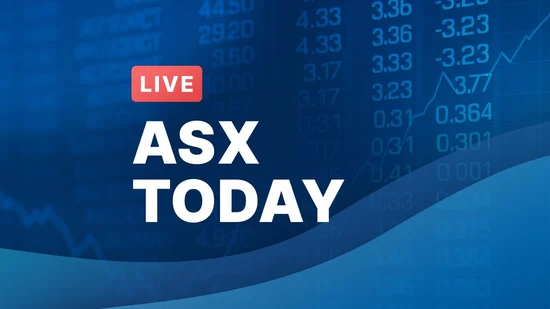ASX 200 reflects fiscal restraint and global rotation
The ASX 200 (AS51) held near 7,050 as AUDUSD=X traded around 0.66, showing investor rotation into resources amid tighter fiscal settings and the RBA’s steady policy stance as domestic consumption and retail sectors weaken.

Australia’s equity market entered the week of 11 November 2025 with pronounced sensitivity to global macro developments. On the day, the S&P/ASX 200 (AS51) hovered around 7,050 points, reflecting mixed risk sentiment shaped by U.S. fiscal gridlock, softer Chinese commodity imports, and investor caution ahead of the Reserve Bank of Australia’s December policy meeting. Despite headline stability, underlying market breadth narrowed as financials and consumer discretionary stocks reversed earlier gains while energy and materials advanced on firming commodity prices.
The pattern underscored deeper macro dynamics: nominal growth remains positive, but productivity is lagging and fiscal capacity constrained. Real GDP growth is estimated at 1.6 percent in 2025, modestly above 2024’s 1.4 percent, supported largely by population gains rather than labour-productivity improvements. Private consumption has slowed to roughly 1½ percent year-on-year under the drag of elevated borrowing costs and slightly negative real wage growth, pressuring retail and small-cap sectors. By contrast, corporate profits in resources rose about 8 percent year-on-year as LNG and iron-ore prices stabilised near USD 11 per MMBtu and USD 121 per tonne respectively, sustaining a trade surplus around 3 percent of GDP.
Valuations remain above trend at 15½ times forward earnings versus a 14× long-term average, but sectoral rotation shows selective optimism in capital-intensive industries that hedge inflation and currency risk. The Australian dollar (AUDUSD=X) traded near 0.66 amid subdued global risk appetite and expectations that the RBA will maintain its 4.35 percent cash rate into mid-2026. The 10-year Commonwealth bond yield eased to 4.45 percent, narrowing the spread to U.S. Treasuries to roughly –35 basis points as investors priced in slower credit creation and moderating labour-market gains.
Fiscal conditions remain tight. The underlying cash balance, projected near –1¼ percent of GDP for FY 2025/26, limits counter-cyclical flexibility, yet the government continues to direct spending toward housing supply and green-energy infrastructure—supporting construction employment while targeting longer-term productivity. Domestic liquidity channels remain steady: superannuation inflows averaging about AUD 5 billion per month continue to underpin equity demand and temper external-funding needs.
The broader signal from the 11 November session is a defensive rotation. Investors favour cash-flow resilience and tangible-asset exposure while reducing leverage to household consumption. This positioning implies expectations of a durable restrictive stance from the RBA and a shift in growth reliance toward exports and commodities rather than credit-driven domestic demand. Institutional portfolios are accordingly overweight miners, utilities, and export-linked infrastructure, anticipating a 2026-27 reflation once global inventory cycles stabilise.
Key indicators bear close watching. The three-month interbank spread has compressed to 21 basis points from 58 in July; any move back above 40 basis points would flag renewed liquidity strain. Equity-risk premia remain thin at about 4½ percent, exposing valuations if Chinese fixed-asset investment growth falls below 3 percent year-on-year. Over a six- to nine-month horizon, base-case scenarios suggest the ASX 200 trading within 6,800 to 7,300 points, contingent on commodity resilience and the RBA’s tolerance for persistent above-target inflation.





